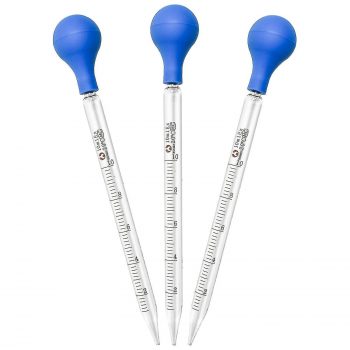Project Report For Pipette
Introduction
Project Report For Pipette is as follows.
Pipette are standard laboratory supplies used in scientific labs to transmit a predetermined volume of liquid, usually acting as a media dispenser. There are three varieties of pipettes: glass, plastic, and electronic, each with a variety of uses. Glass pipettes are made of borosilicate glass, plastic pipettes are made of polyethylene terephthalate (PET), and electronic pipettes are managed by microprocessors. Glass and plastic pipettes are widely used for quantities under one millilitre (ml).
The smallest volume that can be measured with an electronic pipette is 0.1 microliters (ml). Micropipettes have a measuring range of 1 to 1000 ml, while pipettes normally start at 1 ml. It is utilised in a wide range of experiment processes in the fields of chemistry, molecular biology (biotechnology), medical research, general natural science studies, analysis of food and chemicals, food safety inspections, and clinical examination inspections.

Types Of Pipette
- Pasteur Pipettes :- It is sometimes referred to as eye droppers or just droppers. Although plastic Pasteur Pipettes have replaced them, they were traditionally made of glass. They were created with the express purpose of facilitating the transmission of tiny volumes of liquid. These tubes are connected at the top by a rubber or plastic bulb, and they taper down to a small opening at the bottom. A rubber bulb and glass Pasteur pipette are combined to form a teat pipette.
- Volumetric pipettes :- It is also referred to as a belly pipette or a bulby pipette. While creating laboratory solutions from stock and getting ready for titrations, it is frequently employed in analytical chemistry. Its section is long and slender, with a large bulb. They work well for rapid measurements since they may be calibrated to provide an exact set volume of liquid with an accuracy of up to 4 significant digits.
- Graduated pipettes :- Graduated pipettes are ones that have a scale showing volume increments next to the tube. These pipettes, which come in a variety of forms, are widely used for simple solution transfers. They are often made of glass or sturdy plastic, and their tips are often tapered. Depending on how they are made, graduated pipettes can be categorised as Type 1, Type 2, or Type 3. Type 1 pipettes have partially deliverable solutions in all volumes. Type 3 pipettes only deliver the solution at the nominal value, while type 2 pipettes alternate between zero and the nominal value at the bottom and top, respectively.
Get Completely Custom Bankable Project Report
- Vacuum-assisted Pipettes :- There are available graded and volumetric vacuum-assisted pipettes. Graduated vacuum-assisted pipettes use numerous graduation marks, in contrast to volumetric vacuum-assisted pipettes, which only use one graduation mark to indicate the volume being measured. Pipettes with vacuum assistance are made of polystyrene, glass, or borosilicate. They need a suction device because they lack pistons.
- Repeater pipette :- Repeater pipettes are ideal for continuously dispensing the same amounts into a variety of containers without halting in between, increasing speed and efficiency. They may be used by one operator at a throughput capacity because they are lightweight and only require one hand to operate.
- Transfer pipettes :- For transferring minuscule volumes of liquid, transfer pipettes are disposable plastic pipettes. In order to extract or distribute liquid, they are constructed of a long, narrow tube and a moulded bulb that may be pressed and released. Transfer pipets are also referred to as pasteur pipets, teat pipette, droppers, eye droppers, and chemical droppers.
Market Potential of Pipette
The pipette market is predicted to reach USD 1,538 million in 2020 and is projected to expand at a CAGR of 4.1% from 2021 to 2026.
Pipettes are especially used in laboratories as media dispensers for transferring liquids. These are typically made of glass or plastic and are used to dispense measurable amounts of liquid. Pipettes and related accessories are available in a variety of sizes and designs. They are mainly used in biotechnology and pharmaceutical applications. Pipettes are used to reduce contamination rates and increase sampling accuracy when transferring materials.
Technological advances in healthcare have greatly improved the pipetting of materials, from glass to high-quality plastics. Manufacturers are also widely launching different designs of pipettes based on different purposes, from monolithic pipettes to more complex electronic pipettes, with different accuracies and accuracies, driving the growth of the pipette market during the 2021 is the projection period, and 2026 is anticipated to grow.
The growth rate of the pipette industry is attributed to the increasing investment in cancer therapeutics research and various investments in research, and the scale of research in molecular biology is increasing exponentially, creating new opportunities.

